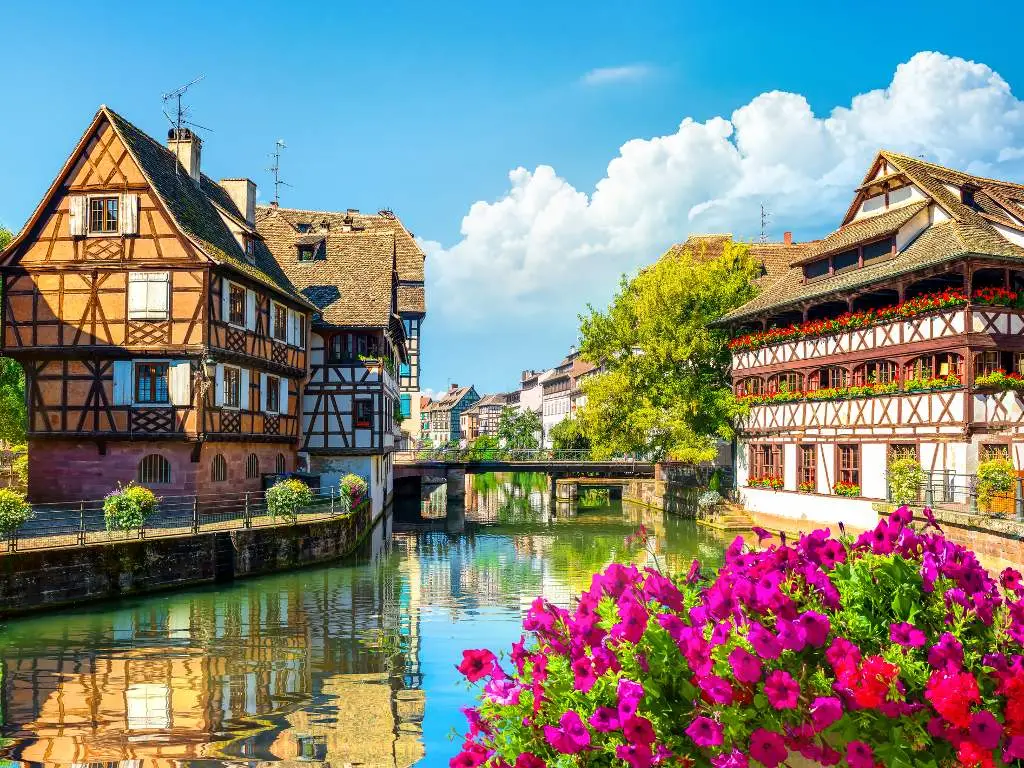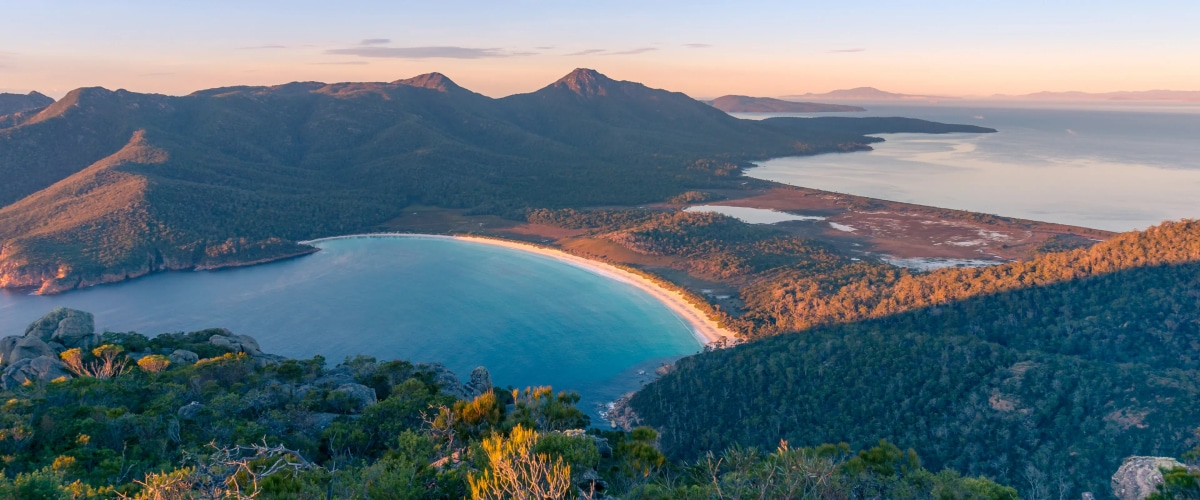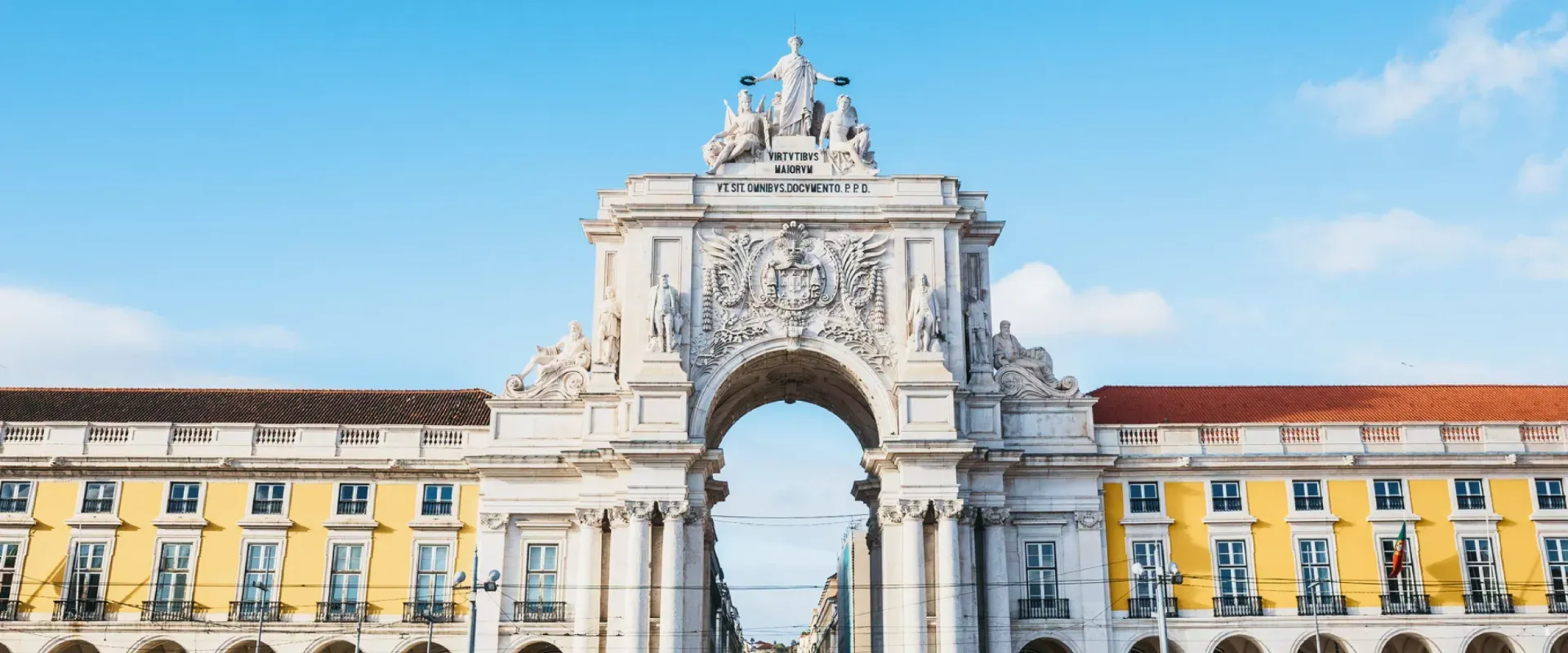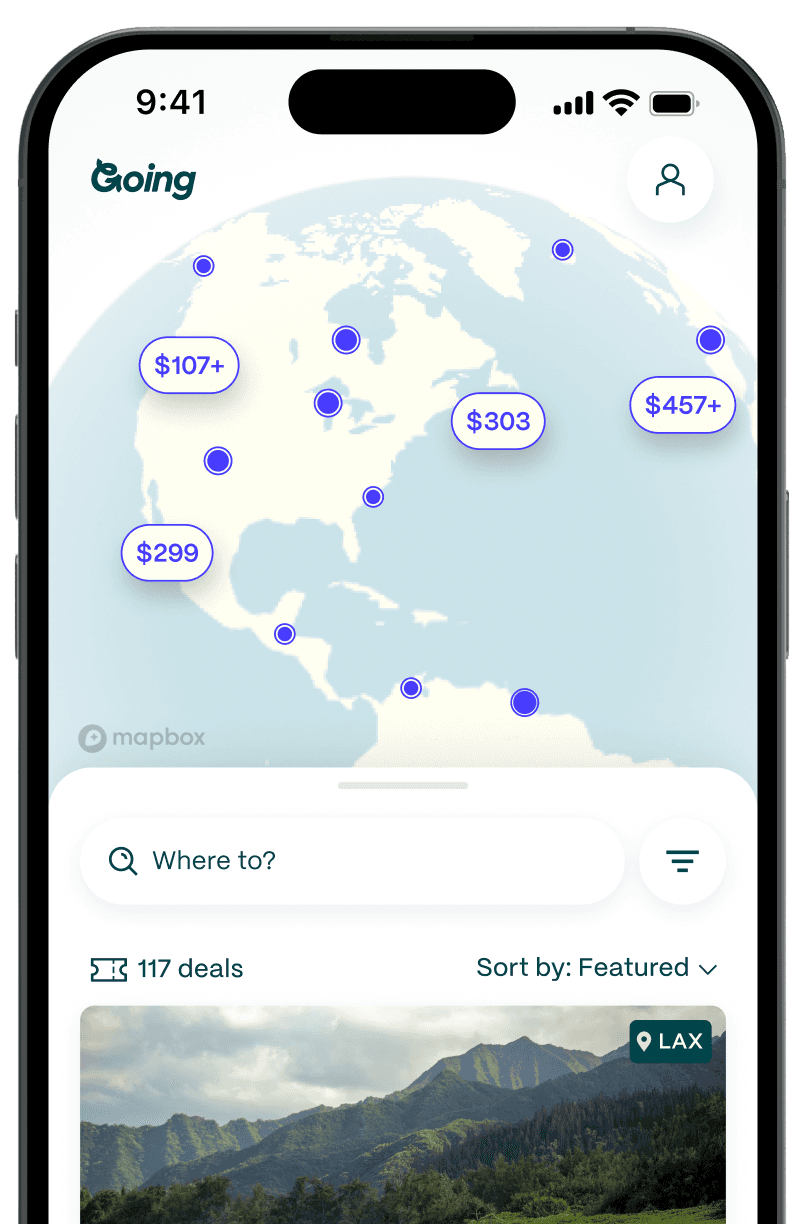
How To Plan a Trip To Portugal: Ideas and Recommendations! (2026)
At first glance, Portugal seems like a quick-to-explore slither on Europe’s western edge. But look a little closer, and you’ll soon see this compact country packs in a continent’s worth of experiences—and that’s before you even get to the dozen-odd islands across the Azores and Madeira archipelagos. From the southern Algarve’s glorious butterscotch sands to the north’s traditions and timeless mountain towns, deciding which of Portugal’s diverse destinations to visit is your first challenge.
Seeking surf? Stick to the west coast, where the world’s largest waves crash against craggy sea cliffs. Craving a cultured city break? Hobbly Lisbon’s rickety trams, renovated palaces, and intercultural cuisine await. Eager for an escape? Central Portugal’s schist villages are the perfect stargazing bolthole. Or why not cross the country top to toe on the 459-mile-long N2 road?
Planning a trip to Portugal usually means quickly accepting that you'll need a second visit—but here’s what to know to plan the perfect first vacation.
When to visit Portugal
Portugal’s reputation for sun, sea, surf, and sand might seem summer-suited. Yet, with winter skiing (yes, really) and February’s carnival celebrations, wildflower-flanked trails in spring, and autumn’s grape-stomping harvests, there truly isn’t a bad time to visit Portugal.
Spring (March–June) and autumn (September–November) are arguably the best seasons for a countrywide trip and climate. During the summer high season (June–September), festivals and lifeguarded beaches can compensate for higher prices, while winter (December–March) is best for low-season hotel and flight deals, superlative surf, and a more local atmosphere.
Bear in mind, there are some seasonal and regional variations to keep in mind.
Lisbon

Lisbon is having a moment, and Portugal’s capital is now a popular city break any weekend of the year. In summer, when Spanish cities are scorching, the Atlantic breeze keeps Lisbon appealing, while the winter sun makes it a reliable end-of-year getaway. One of Lisbon’s busiest and best times to visit is during Festa de Santo Antônio in mid-June, when the historic streets overflow with humorous singing, salty sardines, and kaleidoscopic decorations.
Porto and the North

Northern Portugal gets more drizzle in the winter, so come in spring when the Parque Nacional Peneda-Gerês is most lush and Braga’s Easter celebrations are in full swing. Or plan an autumn trip around the wine harvest when the Douro Valley is a delight.
The Algarve and Alentejo

The Algarve is (mostly) about beaches, and with the country’s sunniest climates, it’s a reliable pick for much of the year. However, in the low season, many businesses shutter, making April through October best. Know that this is the Atlantic, not the Mediterranean, so swimming is chillier here than in Spain or Italy no matter the season. Alentejo’s hinterlands can be unbearably hot in summer, so spring and fall are best for vineyard-hopping road trips.
Madeira and the Azores

Closer to Africa than the Algarve, Madeira is Portugal’s most year-round destination, seemingly in a constant state of spring. On the other hand, the Azores, adrift in the Atlantic about 900 miles west of the mainland, can have wild winters, with reduced ferries and a higher chance of rain and gales.
How to get to Portugal
Lisbon is Portugal’s main gateway, but direct, intercontinental flights have expanded access to regional airports.
Lisbon (LIS) has direct routes to and from many US cities, including Boston, New York, Philadelphia, San Francisco, and Washington, DC. The average cost of flights to LIS found by Going is $504, with the cheapest deal we’ve sent being $247 from Florida (FLL).
Porto (OPO) has nonstop flights to and from New York and Boston. In May 2024, United will launch the first direct flight from the US to the Algarve, linking New York (EWR) with Faro (FAO). Air Azores provides direct flights to São Miguel (PDL), Terceira (TER), and Madeira (FNC) from certain US airports, which vary by season. Most other flights operated by TAP Air Portugal include a transfer in Lisbon, which can be handy when using their stopover program.
Before you go
3–11 months out
Monitor airline deals, and book flights during the Goldilocks Window. If you’re traveling to the Azores, book accommodation and car rental as soon as possible, as demand often outstrips supply.
3–7 months out
Check passport validity for Portugal/Schengen Zone, and schedule any vaccine boosters. The CDC recommends all routine vaccines (such as influenza, chickenpox, and polio) are up to date. If necessary, ensure you have travel insurance to cover possible cancellations.
2–6 months out
Book hotels around six months ahead if you’re visiting in peak summer, on a popular weekend, or have your eye on a particular hideaway. New accommodations are always opening in Portugal, so even last-minute trips will afford a fairly decent stay. If you’re planning to visit remote villages, options can be scarce, so book now. Finalize car hire, make MICHELIN restaurant reservations, and book any Azores inter-island ferries—schedules are usually published four to six months in advance.
1–2 months out
Book intercity train tickets (usually released 60 days ahead) to secure seats and discounts—they can always be canceled.
2–4 weeks out
Book intercity buses (released six weeks ahead), airport transfers, and significant activities, such as fado concerts, Sintra’s palaces, guided tours, and Douro River cruises. Contact any rural vineyards you plan to visit, as smaller producers usually need advance notice.
3–5 days out
Purchase an eSim if needed—alternatively, Vodafone stores are in major airports—and consider if a Lisbon or Porto sightseeing card is worth purchasing on arrival.
How long to spend in Portugal

On a flying, three-day visit, focus on either Lisbon or Porto, with a day trip. In Lisbon, you can spend two days exploring the city and another palace-hopping in Sintra or on the coast in Costa da Caparica or Arrábida. In Porto, spend your third day visiting the Douro Valley’s wineries. With five days, you could combine both major cities into a whirlwind trip. Take a week, and you could string together Lisbon, Sintra, Nazaré's surf scene, Aveiro’s dune-backed beaches, and Porto for a fast-paced Portugal overview.

On an 8–10 day vacation, consider starting with the Algarve’s dramatic rock formations in Lagos or Benagil before heading north, or plan 11–14 days to allow for some hinterland exploration around Alentejo’s vineyards or Central Portugal’s 12 Historical Villages. If you can spare more than two weeks, explore Portugal’s offbeat corners, such as the Minho or the Serra da Estrela mountain range.

If you wish to include Madeira’s epic trails or the Azores volcanic wonders in your itinerary, know that these two archipelagos could easily be their own vacations. Spending a few days on Madeira or São Miguel, the Azores main island, as part of your Portugal trip, will allow the chance to experience the highlights of either. Just keep in mind that there’s plenty on the mainland to fill a full vacation. Also, weather-related flight delays aren’t uncommon—so plan a spare day either side of any intercontinental flights departing Lisbon.
Deciding which cities and regions to visit in Portugal
Portugal’s geography is diverse. In the south, beach days are plentiful. In the center, medieval villages, vineyards, and mountains await. And up north, national parks and hardworking cities are threaded by festivals and traditional crafts. Then, there are the two archipelagos, which are ideal for active, volcanic adventures.
Approach Portugal as seven major tourism regions: Lisbon and its surroundings, Alentejo, Algarve, Centro, Porto and the North, Madeira, and the Azores. (Note: There are historical regions often still discussed today that fall into these more modern designations.)
Lisbon

Portugal’s personality-packed capital spills over seven hills overlooking the Tagus River. Vintage yellow trams trundle past museums, pretty miradouros (viewpoints), tascas (taverns) serving traditional cuisine, and along the river to UNESCO-listed monasteries and famous custard tart shops. It’s a city that offers something for everyone, and as the country’s main gateway, Lisbon deserves no less than two days on your itinerary so you can tour the historic Alfama district, party in Bairro Alto, and visit Belém’s historic sights.
Sintra, Cascais, and Setúbal

The Lisbon Metropolitan Area—which includes the Estremadura and Ribatejo regions—boasts plenty, all easily accessed from Lisbon in less than an hour. Slip away to Sintra for stately homes and palatial complexes, head to Cascais for a well-healed seaside escape, or set your sights south on Setúbal and Sesimbra, where the Parque Natural da Arrábida has some of Portugal’s most spectacular, overgrowth-shrouded bays and beaches.
Évora and the Alentejo

If you’re traveling from Lisbon to the Algarve, you’ll pass through the Alentejo region—but try not to pass too quickly. Évora, the regional capital, has a Roman temple, a Chapel of Bones, and first-class wineries; luckily, it can be visited on a long day trip from Lisbon. Stay a little longer to ease into the slumber, and discover stuck-in-time villages, such as hilltop Monsaraz or museum-like Mértola.
The Algarve

In the sun-kissed south, every day is a beach day. From windswept western bays and craggy rock formations best seen by kayak to sandbar islands in the Ria Formosa, swimming suits and sunscreen are essential. However, there’s also an evolving wine scene here, as well as ancient Roman and Islamic ruins and a couple of idyllic mountain villages—Monchique even has thermal springs.
The Silver Coast

Between Lisbon and Porto, the Costa da Prata (Silver Coast) is best known for its world-beating waves, especially around easy-going Ericeira and crowd-calling Nazaré. You could easily spend a few days making your way up this coast. Popular stops include the protected Berlengas Islands and Aveiro, with its Venice-compared canals. Take a detour inland to visit Óbidos, Portugal’s prettiest medieval village, or a clutch of UNESCO-listed monasteries and sights around Alcobaça, Batalha, and Tomar.
Coimbra and the Beiras

Coimbra is Portugal’s university city. From robed student serenades to a decadent library, everything here seems to revolve around academia. However, it’s also the capital of the expansive and unsung three Berias region (now often called Centro Portugal), crammed with offbeat hiking adventures, tiny granite villages, and lesser-visited vineyards.
Porto and the North

Portugal’s second city wows with glorious architecture—the gilded, Islamic-inspired interior of the Palácio da Bolsa is spectacular—an excellent dining scene, the Port lodges of Gaia, and plenty of azulejos (Portugal's signature tiled façades). But the North, which includes the Minho and Trás-os-Montes regions, merits a longer stay. Trains and day cruises will take you to the terraced Douro Valley vineyards; the Parque Nacional Peneda-Gerês is a hikers' haven; and historic medieval cities, such as Guimarães, Bragança, and Braga, are layered with stories.
Madeira and the Azores

Portugal’s two archipelagos are the Azores, with its nine volcanic islands, and Madeira, where the two main isles are its namesake adventure playground and the golden-sand speck of Porto Santo. If you want cinematic adventures, you can’t go wrong with either group. Madeira excels for its waterfalls, levada trails—which track an ancient irrigation system—and above-the-cloud hikes, while the Azores bubbles with geothermal activity, whale-watching, and hydrangea-lined trails. Either archipelago could be a stand-alone vacation. This is especially true of the Azores, where island-hopping can be hindered by flight and ferry delays—you’d want to allow at least three weeks for a fairly fast-paced trip around all nine isles.
How to get around in Portugal
No car is required in Lisbon or Porto. Metros, trams, commuter ferries, city buses, metered taxis, and rideshare apps (such as Uber and Bolt) will get you there when walking won’t. Purchase a travel card to save money. Day trips to Sintra, the Douro Valley, and Cascais by train are painless, and rail is the best overall option for traveling between cities. Just check for planned strikes a few days ahead. Rede Expressos’ excellent and affordable bus network connects most towns, with regional bus services (Vamus in the Algarve and Transdev in the center and north) filling in local gaps.
Know that buses, especially in rural areas, are scheduled around school and commuting. As such, if you’re planning to tour hinterland vineyards, offbeat spots, secluded shorelines, or visit the Azores, a car is essential—though, it’s recommended to collect it when leaving hard-to-park historic city centers. Some transport options, such as Lisbon’s rickety yellow trams and funiculars, Madeira’s human-powered toboggans, and the Spain-Portugal zip wire, are more about memories than movement.
Domestic flights connect Lisbon, Porto, and Faro, though only the Faro–Porto route really rivals rail. Seven Air serves small airports in more remote areas. Domestic flights are a must to reach the Azores and Madeira. Ferries operate between some Azores isles and link Madeira to Porto Santo but no longer connect with the mainland.
Dos and Don’ts in Portugal
Do watch a fado performance, Portugal's hauntingly beautiful music, but don’t talk over the singers—performers are respected, not background music, and you’ll likely be shushed.
Do eat couvert (the bread, olives, and snacks that come before a meal) if you want—some say it’s a scam, but it’s an affordable and traditional appetizer—but don’t feel bad about sending it back either.
Do shop in local mercados (markets) for fresh produce, but don’t buy fish on Sunday or Monday, as fishermen aren’t usually out on these days.
Do learn a little Portuguese, but don’t get Spanish (or even Brazilian Portuguese) confused—most people speak good English.
Do bring comfortable shoes—high heels on slippery calçadas are a menace—but don’t forget some smart clothes and layers.
Do check opening hours in advance, especially in the low season when certain restaurants and attractions close, but don’t rely only on online information or emails—it’s always best to pick up the phone in Portugal.
Things you need to book in advance in Portugal
Intercity trains in Portugal require seat reservations (standing is not allowed), so you’ll want to secure tickets one to two months in advance, with a hefty discount, on popular routes. Sintra’s palaces require ticketed time slots, so book in advance to avoid queues and enjoy an online discount. Similarly, rural vineyard visits, river cruises, and any guided tours are best booked ahead.
Portugal's fine-dining scene received a dedicated MICHELIN guide in 2024, so acclaimed restaurants, especially those in hotels such as Vila Joya and The Yeatman, should be booked months ahead. In the Azores, demand for everything is sky-high in summer, so secure hotels and car rentals quickly.
How to budget and manage your money for Portugal
Portugal’s days as a budget destination are waning. However, it remains excellent value-for-money at the lower end of the mid-budget price point. In general, it’s much more affordable than other western European destinations (such as France or Germany), though prices in more visited parts of the country are now similar to other popular southern European countries, such as Spain or Italy.
Average cost of hotels
Private, shared-bathroom rooms cost as little as $25. Expect to pay $60 for a mid-range, family-run guesthouse. At upscale boutique hotels, plan to spend $150+, perhaps even double in Lisbon or on the coast with a sea view.
Average cost of sit-down meal
Affordable, fixed-price daily menus in tascas cost $10–$15. Expect a three-course dinner with wine at a restaurant to cost $40 per person. MICHELIN tasting menus start from $100.
Average cost of street food
In a local pastelaria (pastry shop), a coffee and pastel de nata (egg custard tart, one of the quintessential eats of Portugal) cost roughly $2.50. A beer or wine can be just $1.65.
A metro ride costs $1.80, a booked-ahead high-speed train from Lisbon to Porto is $24, and fado concerts start at $15+ (unless you book a guided tour).
Credit card usage is more common in Portugal than it used to be, but many businesses—especially small, local ones—only accept cash. American Express is rarely accepted. As such, always carry euros, including a few coins for tips or toilets. Using an ATM at an actual bank often guarantees a better rate than other ATM operators and is usually superior to exchanging USD. If you do need to exchange currency, use a well-established bureau de change, such as NovaCâmbios or Unicâmbio, which have downtown offices and airport desks—fees may be slightly higher for the convenience of using an airport counter.
Tipping culture is less rigid, and rounding up for taxis and at snack bars is the norm. In restaurants, leaving a few euros is accepted, while 10% is considered a good tip for great service in more formal dining rooms.
Useful websites and apps for Portugal
- https://www.cp.pt/ - National railway operator
- https://rede-expressos.pt/ - Main bus operator
- https://www.carris.pt/ - Lisbon public transport
- https://bolt.eu/ - Popular Uber alternative
- https://glovoapp.com/pt/ - Delivery app for food, pharmaceuticals, and groceries
- https://www.toogoodtogo.com/ - Save affordable end-of-day food “waste” from restaurants
- https://www.practiceportuguese.com/ - Paid app for European Portuguese
Frequently asked questions about planning a trip to Portugal
Do US citizens need a visa to visit Portugal?
How long can a US citizen stay in Portugal?
How expensive is Portugal?
What vaccines are recommended for Portugal?
Do US citizens need an international driver's license to drive in Portugal?
Is Portugal safe for solo female travelers?
Is Portugal LGBTQ+ friendly?
Last updated December 19, 2025









